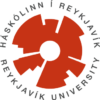Work package 7: Digital management platform
Lead: Reykjavik University
What is the expected outcome of WP7
Work-package 7 focuses on the design and development of a state-of-the art digital platform that connects participants with healthcare professionals and research co-ordinators. The digital platform functions as a bridge between different stakeholder groups. These stakeholder groups are mainly healthcare providers, and participants in various research studies linked to the Sleep Revolution project and the digital platform that we are designing and developing has the potential to become the leading digital platform for connecting healthcare providers and recipients in Europe. Each stakeholder group requires their own type of login, and as through their login type, they get their own configurations.
What is the research focus in WP7
The process of designing and developing the digital platform includes a co-design approach with the three main stakeholder groups (end-user groups): i) healthcare professionals, ii) participants and iii) research co-ordinators. In WP7 we are therefore researching the co-design of the digital platform, and examining everything that has to do with setting up the digital infrastructure for the project as a whole. The broad research aim is therefore to examine design and development of a user-friendly digital platform through co-design with three stakeholder groups and to shed light on data structures on the one hand, and on interaction design on the other hand.
How does WP7 fit into the Sleep Revolution project
The digital platform takes in different types of data, so that the stakeholder groups can all use the same digital platform, independent of the data type and the digital platform also unifies, and ensures user-friendliness. Data quality mechanisms are built into the digital platform to ensure completeness and integrity of the data. The data that goes into the digital platform come primarily from four types of data sources: i) sleep study data with scored results, ii) continuous data gathered through wearables, iii) mobile-friendly self-assessments, cognitive tests and adherence to treatment data, iv) tailored questionnaires for increased data-quality. The first two types of data sources come mainly from sensors that are placed on the body for objectively measuring sleep and sleep quality. The two latter types of data sources come mainly from a mobile application (an app) that the participants use, and has been designed and developed as a part of WP7. The app feeds subjective data about the daily lives of the participants into the digital platform, and together all the types of data that is gathered about the participant, is visualized in the digital platform.
Participants:

Reykjavik University
Akershus Universitet-sykehus

University Of Eastern Finland
University Of Queensland

University Of Oslo

Nox Medical Ehf

Sidekickhealth Ehf

Norsk E Helse As

Gothenburg University

European Sleep Apnoea Database

Empatica Srl
